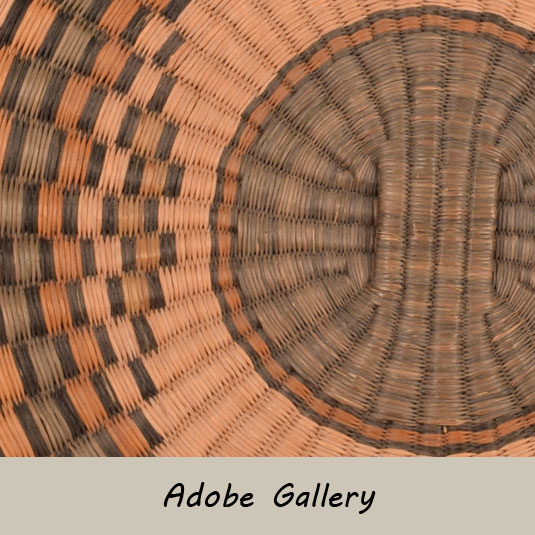Hopi Third Mesa Award Winning Wicker Plaque [SOLD]
+ Add to my watchlist Forward to Friend
- Category: Trays and Plaques
- Origin: Hopi Pueblo, Hopituh Shi-nu-mu
- Medium: dunebroom, rabbit brush, yucca, dyes
- Size: 13” diameter
- Item # C4559K SOLD

This spectacular wicker plaque combines circles, squares, and waves in the design. The blue center is a circle, the yellow surrounding it is square, and the multi-color rows on the outer edge evoke a wavy pattern. We see this as a work of art, which it is, but it is to the Hopi a way to preserve their culture. Plaques serve to illustrate a woman’s role in Hopi society—as the one who nurtures the children, prepares food for the family, and teaches them the ways of their culture.
A plaque is given to a newborn baby, one when the child attends its first katsina dance, one when a man is to be wed, and on other occasions. Plaques are made by the bride’s family to be given to the groom’s father as payment for his weaving of the brides’ clothes.
Yes, they are art, but they are more importantly ceremonial items for the Hopi. A hundred years ago, they were made solely for ceremonial purposes, but now they are made for sale to non-Indian buyers. That does not diminish their importance to the Hopi.
That this plaque was recognized as a work of art is the award of a ribbon at the Inter-tribal Indian Ceremonial in Gallup, New Mexico, in 1962. The award ribbon is attached to the plaque.
Condition: very good condition with some fading of colors as is typical of Hopi baskets.
Provenance: this Hopi Third Mesa Award Winning Wicker Plaque is from the collection of a gentleman from Colorado
Recommended Reading: Hopi Basket Weaving: Artistry in Natural Fibers by Helga Teiwes
Relative Links: Southwest Indian Basketry, Hopi Pueblo, Hopituh Shi-nu-mu

- Category: Trays and Plaques
- Origin: Hopi Pueblo, Hopituh Shi-nu-mu
- Medium: dunebroom, rabbit brush, yucca, dyes
- Size: 13” diameter
- Item # C4559K SOLD



